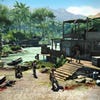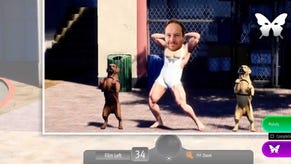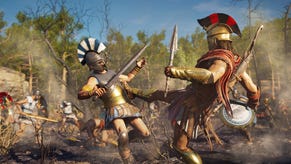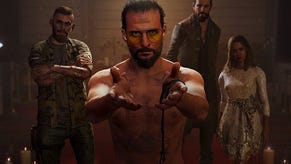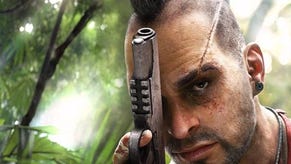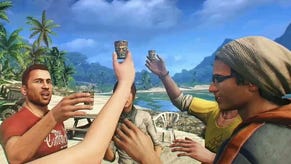Far Cry 3
No man’s an island.
"The right way to do it is kind of layers of an onion, where you start in a guided experience and then you gradually open it up in chunks... You're going to have a staged experience where you get used to the mechanics, so that by the time we open the whole thing up and it stays open to the end of the game, you're ready and you know where to go."
As with Crytek's original game, the island harbours a dark secret. But this time it's no sci-fi menace. In Far Cry 3, everyone on the island is insane.
Captured in the demo, we are lectured on the nature of madness by an intense and frighteningly eloquent young Latino called Vaas. Amid all E3's violent bombast, this scene stood out for the quality of its writing and performance; direct, not too showy, arrestingly human. "Developers have a tendency when they talk about characters to think in terms of archetypes," says Vandenberghe. "He's the villain, this is the helper... What we did is we said, we don't want archetypes, we want people. We want real people."
Vaas is the head of a group of "modern-day pirates" and your primary antagonist in the first half of the game. His persona is a result of close collaboration with the actor who plays him - and naturalistic, credible characters are central to what Ubisoft Montreal wants to achieve with Far Cry 3. If Far Cry 2 was political, Vandenberghe says, Far Cry 3's themes are psychological; it's promised we'll meet several characters like Vaas, each with their own distinct brand of craziness.
"[Far Cry 2] was about factions and it was about political consequences, and life and systems. I think Far Cry 2 was making some pretty broad statements about war and revolution, or insurrection, the eternal strife that comes from factions going against each other and how that's unsolvable," he says.
"We're taking it down a level, to a human level. We're taking that idea and saying, yes, man is an animal - let's talk about it on an individual level. Let's talk about this person right here... When we talk about insanity, what we mean is, how would you behave if you weren't constrained by civilisation?"
You'd tie people to rocks and drown them, apparently. In the demo, Vaas heaves our hero into a deep underwater crevasse; after a panicky escape scene we emerge behind a waterfall, using its roaring sound and curtain of water as cover for a stealthy ambush on a patrolling gunman. Use of the island's natural environment will be a key strategy in Far Cry 3, especially water; later in the demo, we swim underwater in a stream to shake off enemy fire and resume attack from a new angle.
The second half of the demo is taken up with this assault on the pirates' ramshackle compound. It's an attempt to hijack a helicopter and escape, but between you and the chopper, there's a sprawling network of buildings, streams and alleys that present cover and vantage points and opportunities for sneaking, sniping or frontal assault.
This is classic Far Cry gameplay, and Ubisoft Montreal seems to have a good handle on what its players want: options for tactical improvisation combined with a survivalists' sense of cobbling your attack together from whatever comes to hand. You'll enter many situations without much equipment; what you need will be there, but you'll have to find it, and the more inquisitive you are, the more you might uncover.
"The core to this fantasy is that I don't have any resources, I'm on my own, it's the 'man alone' fantasy, right? I need to survive through my own wit, talent, skills - my actions will determine if I live or die. That feeling is core to why this context is so fun," Vandenberghe says.





